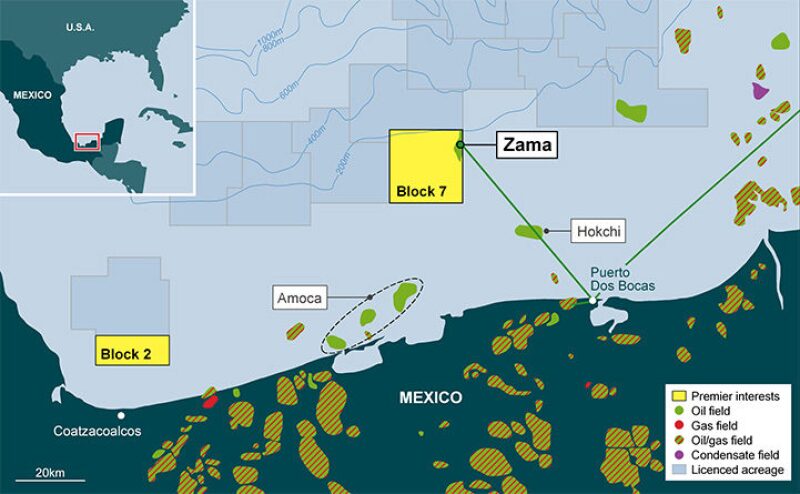Talos Energy has built a successful offshore exploration and production company by finding niches that give it a competitive advantage over larger operators. That process was much in evidence with the company’s recent, historic Zama-1 oil discovery well offshore Mexico, said Loren Long, Talos managing director for Mexico, addressing the SPE International Study Group on 30 November at the Houston Petroleum Club.
Announced in July, Zama was drilled in 546 ft of water 37 miles offshore Dos Bocas in the state of Tabasco and found an estimated 1.4 billion to 2 billion bbl of light oil in place, according to published reports. The 14,000-ft well was the first wildcat discovery in Mexico by a private company in almost 80 years and a milestone for Mexico’s 2014 energy reform, which opened the country’s oil and gas sector to foreign investment for the first time since the 1930s.
Talos and its Zama joint-venture partners Sierra Oil and Gas and Premier Oil ranked the find at the time as the world’s fifth-largest discovery over the preceding 5 years.
Targeting Sureste Basin
Situated in Block 7 of the Sureste Basin, that and one other block acquired by Talos were the only two blocks awarded out of 14 offered in Mexico’s first offshore bidding round in 2015. The apparent low level of interest in the offerings led to a skeptical public reaction in Mexico about the future of offshore bidding. The Zama discovery has reversed that thinking.
Long explained that Talos and its two predecessor companies, which like Talos were backed by private equity, had built their records on “some critical discoveries going behind some of the larger oil and gas companies in the world.”
They stepped in to buy mature fields from majors and supermajors who were exiting them as they approached the end of their life cycles. While their remaining potential was limited, viewed at the scale of the original owners, it was attractive to Talos and its predecessors, who applied their seismic expertise to find new reserves that had significant impact for a smaller company.
Similar thinking lay behind Talos’ decision to enter Mexico’s first offshore bidding round.
Surely There is More Here
“Forty-five billion barrels have been found in Mexico in the Sureste Basin by one operator [Pemex], and we didn’t think that one operator could or really even should find all that there is to find," Long said. We said surely there is some more here to be found."
While Pemex had been successful in exploring and developing the basin’s carbonate structures, the Upper Miocene sandstone to the west was virtually unexplored “with a lot of room here to run,” Long said. Talos believed that the introduction of amplitude-vs.-offset seismic methods and other geophysical techniques could uncover potentially significant new resources.
Looking forward to the initial bid round, “we made a bet that the market initially would be very inefficient,” Long said. “That a lot of companies would be on the sidelines saying, ‘I don’t know about this, I’m not sure it’s going to work.’ … And that was our opportunity as a small player to step in, and sure enough, it worked out.”
World’s Hottest Basin
That period of market inefficiency has passed, thanks especially to the Zama discovery. Sureste “is now the hottest basin—I would argue—in the world as far as participation goes,” Long said. “When it comes to who’s who in the world, they’re here.”
Long believes that Talos can bring the Zama project on stream in 2 to 3 years from a final investment decision, which has yet to be made. And the company’s success in the shallow-water Sureste Basin positions Talos for further exploration and development opportunities on Block 7 and Block 2, the other acreage acquired in 2015.
Making several other points, Long said
The Upper Miocene is the trend to follow.
Shallow-water targets in Mexico need to be taken seriously by the industry.
Companies must keep challenging their own paradigms.
The subsalt and salt-flank plays offshore Mexico will eventually take off.
Talos has pursued a strategy of eventually becoming a public company. That is now coming to pass as the company announced on 21 November that it is acquiring publicly traded Stone Energy in a $2-billion merger expected to be completed in the first quarter of next year.

